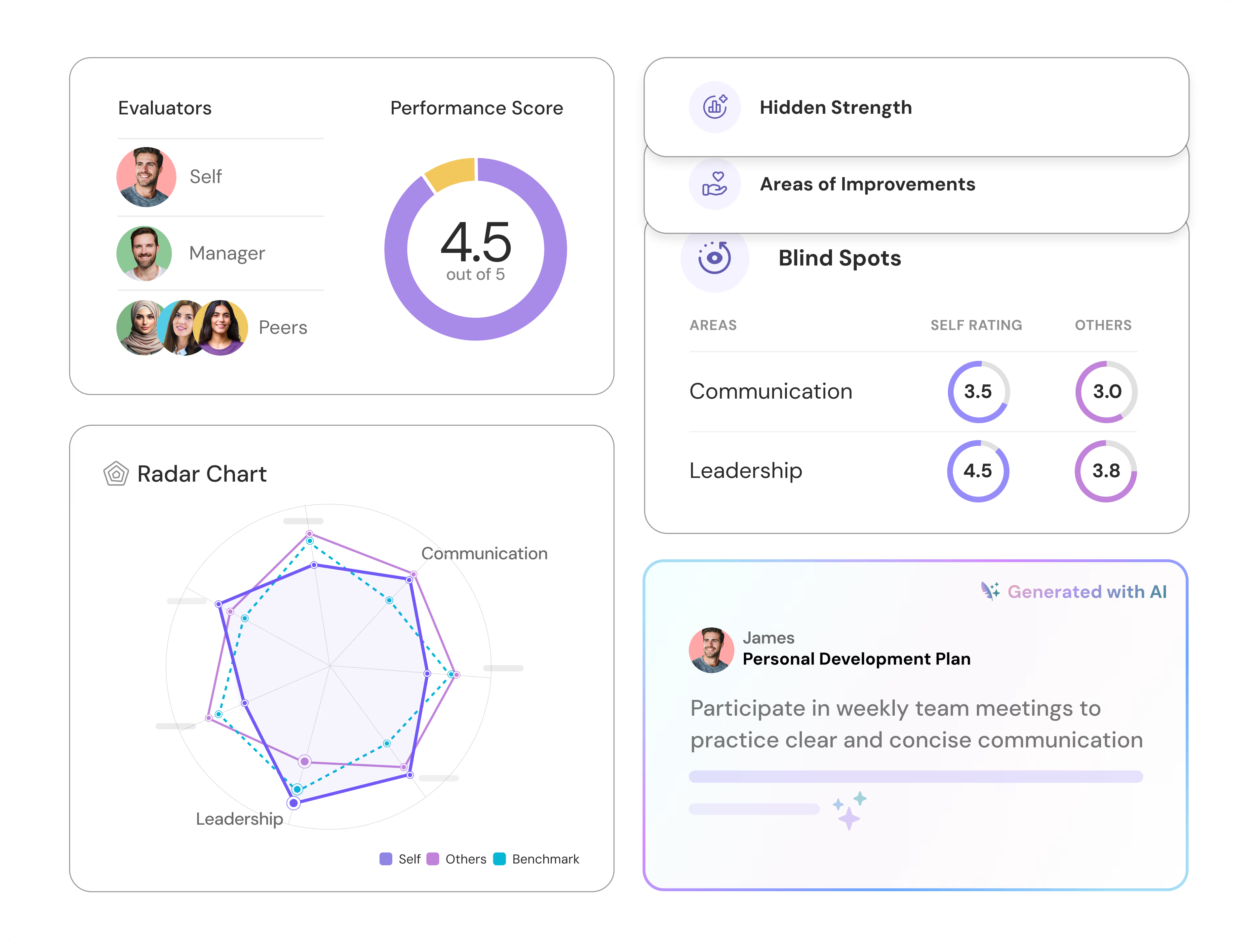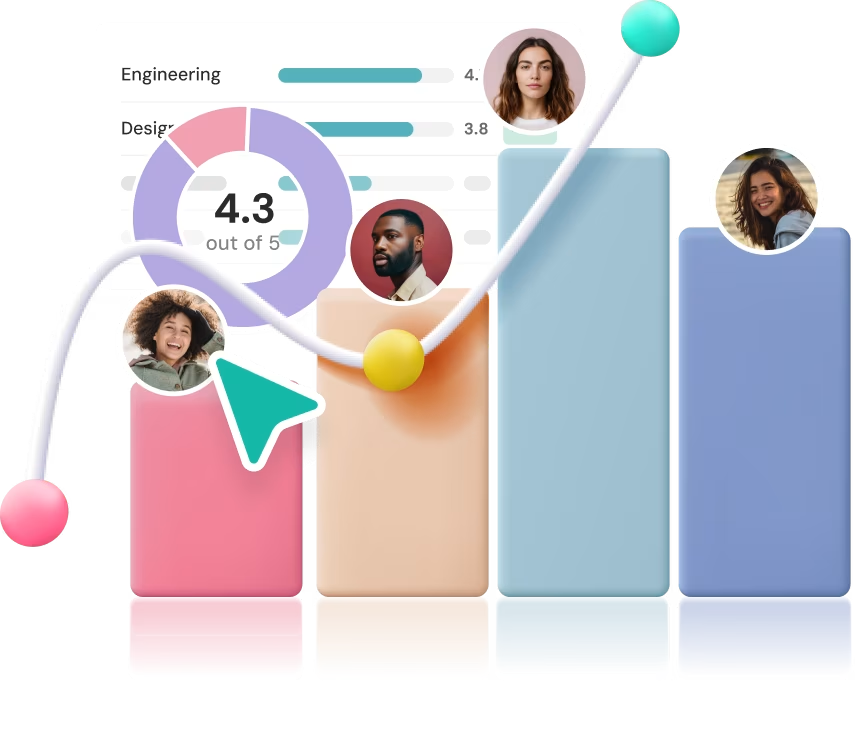Poor performance at work can ripple through an organization, affecting more than just the bottom line. It can undermine team dynamics and erode the overall workplace environment, leading to significant long-term issues.
In this blog, we will explore the causes of poor performance at work and discuss strategies to address poor performance effectively.
When addressing poor performance within a team, it's essential to understand the underlying factors that contribute to it.
By identifying these root causes, managers can more effectively tailor their interventions to suit the specific needs of their employees and enhance overall productivity. Here are several common causes of poor performance that managers should be aware of:
- Personal Issues: Employees can face a variety of personal challenges, such as health problems, family responsibilities, or emotional distress. These personal struggles can significantly impact their focus, energy levels, and overall work performance.
- Lack of Skills or Training: Sometimes, an employee’s poor performance can be attributed to a gap in their skills or a lack of adequate training. This is particularly common when employees are placed in roles that evolve over time, requiring new job competencies that they have not yet mastered.
- Burnout and Work Overload: Chronic stress from high workloads or prolonged periods of intense focus can lead to burnout. This state of physical and emotional exhaustion reduces an employee's productivity and can make them disengaged.
- Workplace Conflict: Interpersonal conflicts within a team can create an uncomfortable or hostile work environment, leading to poor performance.
- Lack of Motivation: An employee's lack of motivation can stem from various sources, including feeling undervalued, a lack of challenging assignments, or unclear job expectations.
- Poor Job Fit: Sometimes, an employee might not be well-suited to their role or the company culture. This misalignment can manifest as poor performance.
- Inadequate Resources: Employees need the right tools, technology, and support to perform their jobs effectively. Without these, productivity can plummet.
Managing poor performance is a critical skill for any leader. It requires a delicate balance of empathy, clarity, and firmness. Here’s a step-by-step guide to effectively address and improve poor performance in your team:
1. Identify the Performance Issues
Start by clearly identifying where the employee is underperforming. Is it a lack of skill, motivation, or are there external factors impacting their performance?
Use data and specific examples to pinpoint where they are not meeting the expected standards.

2. Assess the Root Causes
Understanding the underlying causes of poor performance is crucial. Engage in a dialogue with the employee to explore potential reasons—be it personal issues, workplace environment, unclear expectations, or lack of resources or training.
3. Set Clear, Achievable Goals
Once the issues are identified, set clear and achievable goals with the employee. Use the SMART goal framework to outline what success looks like. These goals should directly address the performance gaps identified.
Get a crystal-clear view of an employee's performance gaps with ThriveSparrow's performance management software. These performance gaps are calculated by comparing an employee's self-rating against peer-ratings during performance reviews.

Are you struggling with managing poor performance within your team? Transform your approach and empower your employees to excel with data-driven insights that help you identify performance gaps and implement effective strategies for improvement.
Imagine having the tools to not only manage performance but also inspire growth and development in your team.
Ready to take the first step? Schedule a free call with our product experts today! We'll show you how to save time and effort managing and improving poor performance effectively.
4. Develop a Performance Improvement Plan (PIP)
Create a performance improvement plan that outlines the specific outcomes needed, the support available from management, and the timeframe for achieving these results. The PIP should be a collaborative effort, ensuring the employee feels supported and understands the process.
5. Provide Necessary Support and Resources
Determine what tools, resources, or training the employee needs to meet their performance goals.
Check out our blog on performance goal examples to help inspire your performance goal-setting process.
This could include additional training sessions, more frequent check-ins, or access to new tools. Ensure they have everything required to succeed.
6. Schedule Regular Follow-Ups
Regular follow-ups are essential to keep the performance improvement on track. These meetings should be used to provide ongoing feedback, discuss any obstacles the employee is facing, and make adjustments to the PIP as necessary.
7. Offer Constructive Feedback
Feedback should be constructive and continuous. Highlight what the employee is doing well and where they can improve.
Ensure that feedback is specific and tied directly to the performance goals set out in the PIP.
8. Encourage Self-Reflection
Encourage the employee to reflect on their own performance and identify areas for improvement. Self-reflection helps employees take ownership of their performance and growth.
9. Decide on Next Steps
After the timeframe for the PIP has elapsed, assess the employee’s progress and decide on the next steps. If the employee has met the performance goals, recognize their effort and continue to monitor their work.
If performance has not improved sufficiently, consider additional training, assistance, or a change in role.
10. Document Everything
Throughout the process, keep detailed records of all interactions, goals set, feedback given, and progress made.
This documentation is crucial both for tracking the employee’s improvement and for protecting the organization in the event that termination becomes necessary. It could also help you reiterate your whole process of managing poor performance.
Mistakes often provide the richest opportunities for learning and improvement, especially within the realm of performance management. If you notice that employees are not performing optimally in certain tasks, initiating the feedback process is a crucial first step. This can involve not only providing accurate and constructive feedback to the employees but also soliciting their input on the existing performance management processes.
Establish a robust feedback loop to foster an environment of continuous improvement. In order to ensure it is effective, this loop should facilitate open, two-way communication between employees and managers.
Note: It’s important to approach this communication channel as a tool for growth and support, rather than criticism and negativity.
When providing feedback, managers should use examples from daily work as instances. This approach helps to make the feedback tangible, understandable, and directly related to the employees' everyday duties.
Ensure that your feedback is well-crafted and constructive; it should aim to guide and motivate, not discourage. The tone, wording, and delivery of feedback can dramatically affect how it is received, so it’s remember to be clear, supportive, and specific.
Furthermore, managers should ensure that their employees fully understand the feedback. Encourage them to ask questions and express concerns, which helps them grasp the essence of the feedback and take appropriate and measurable actions to improve. Keeping the lines of communication open is beneficial—it keeps the process engaging and minimizes any potential frustration that might arise from misunderstandings.
By maintaining a constructive feedback loop, organizations can create a dynamic where continuous learning and improvement are part of the everyday culture.
In order for managers to see a visible change in employees during a performance improvement plan, there are certain things that they can do. These tips make sure that the performance improvement plan is a collaborative process.
#1 Collaborative Goal-Setting
The best way to make sure that employees get through a performance improvement plan effectively is to set goals where there is some level of employee input as well. You can make use of employee surveys to gauge their preference level as well. As a manager and employee together discuss and decide on a goal they both find acceptable, the performance improvement plan becomes more inclusive and collaborative. It increases the likelihood of the performance improvement plan becoming a success.
#2 Alter Responsibilities and Reduce Workload
Maybe an employee fails to achieve their assigned targets because they find the workload and responsibilities to be a bit too overwhelming. To make sure that this is not the case with a performance improvement plan, managers can cut the employees some slack and allow them to work at a more calmer pace.
#3 Coaching and Mentoring
To make things even more effective, a mentor or coach can be assigned to the employee to help them whenever they feel stuck. A performance improvement plan can be hard on the morale of the employee, so having someone to rely on during this hard time can take the load off of them and increase their likelihood of completing the program successfully.
Settle For Nothing Less Than Optimal Performance
Every employee has the potential to perform at their absolute best. If they are not doing so, then find out what is stopping them from it.
An anonymous employee feedback survey can be your best friend here. Rather than firing an employee for their poor performance, try understanding what their problem is and provide help in alleviating the issue. Also, the expense of finding a new employee is much higher than retaining an existing one.
ThriveSparrow offers a wide range of employee feedback survey options for companies of all shapes and sizes. Our customizable survey templates make the job of conducting employee feedback much less time-consuming and 10 times more fun!
Analytical reports help visualize performance and make better decisions.

Here's how:
Download a free performance review report to view this.


















